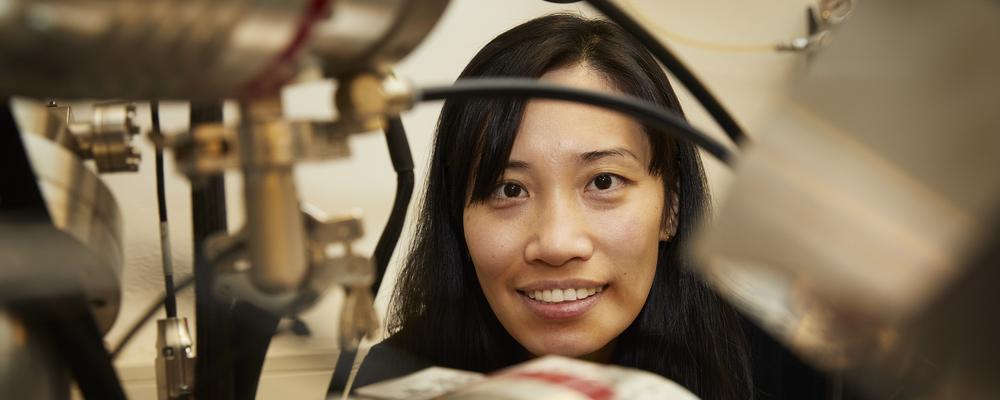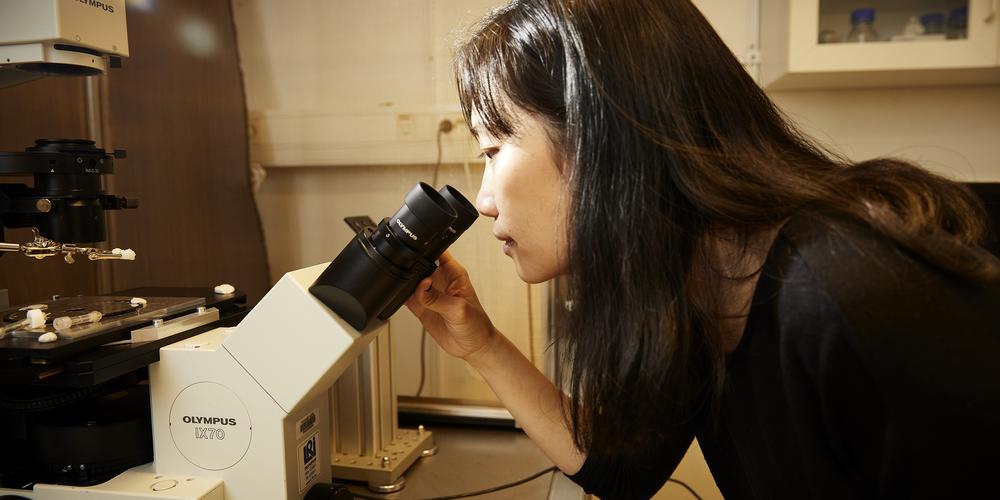Nhu studies the enigma of stem cells
Nhu got interested in chemistry quite early in her schooling. After a Bachelor’s degree in her home country of Vietnam, Thi Ngoc Nhu Phan applied to come to Scandinavia for exchange studies. Today she researches new techniques for studying stem cells at the University of Gothenburg.
What do you most enjoy in your work?
“I like working in a team and I like the environment I find myself in here. It’s the perfect environment for my research. It has top class infrastructure. We work in an interdisciplinary way and collaborate with researchers who have other specialisations such as organic chemistry and biotechnology. We need different kinds of expertise. For example, we are also going to need biologists who work with stem cells in the future. All this collaboration is stimulating and fun. My group is relatively new, but I have a good feeling about them.”
What drives you as a person?
“When you get good results, that stimulates you to want to progress. But initially what drove me was that I liked the subject of chemistry itself; it felt natural and came easy to me. When I finished my undergraduate studies, I first went to a job in industry. But I felt that I didn’t belong in that world and didn’t want to stay there. It wasn’t challenging enough so I did further study and took a Master’s degree. When that was over, I couldn’t comprehend how fast the time had gone. So after my Master’s I didn’t want to stop there. That’s why I went on to doctoral studies.
What drives your research forward?
“I’m passionate about my field of research. My ultimate goal is to find the key to controlling stem cells so that we understand how they develop into tissue or neurons for example. I want to understand the chemical mechanisms at the molecular level and be able to control those processes. This can provide a springboard for others to then develop these processes into medical applications.”
Who inspires you?
“I’ve had teachers who have been super enthusiastic about science, and chemistry in particular. During my post-doc, I met one of the most energetic people in neuroscience I have ever met, Professor Silvio Rizzoli. He lives and breathes science. And during my doctoral studies, I got to see first hand how much a good team can mean to making progress. But ultimately my inspiration comes from my enthusiastic and creative students, post-docs and collaboration partners.”

